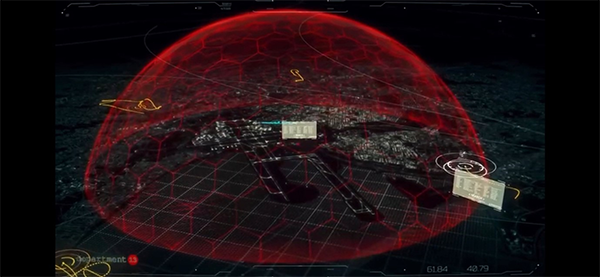Can Drones Be Detected?
You may think of detection systems such as radar only focusing on manned aviation or even the larger drones that are over 20kgs, which, is correct to a certain degree. With the rapid popularity in drones, some have fallen into the hands of irresponsible operators who use them to break the law or fly in a reckless manner. This has caused an increased risk to national infrastructure, sporting events and public shows. As a result, there are firms out there who have not only created detection systems for drones, but also technology to deny drone activity. Some of the larger enterprise drones have Automatic Dependent Surveillance–Broadcast (ADS-B). ADS-B is a surveillance technology and form of Electronic Conspicuity, in which an aircraft determines its position via satellite navigation or other sensors and periodically broadcasts it, enabling it to be tracked. The information can be received by air traffic control ground stations as a replacement for secondary surveillance radar, as no interrogation signal is needed from the ground. It can also be transmitted and received point-to-point by other aircraft to provide situational awareness and allow self-separation. ADS-B is "automatic" and requires no pilot or external input. It is "dependent" as it depends on data from the aircraft's navigation system. All the DJI enterprise drones can detect local manned traffic for a better situational awareness.
So How Can Drones Be Detected if They Don’t Have This System?
DJI have created their own detection called Aeroscope, which only detects DJI aircraft by scanning the airspace up to 8km away. As soon as the aircraft is powered on, the user can identify aspects such as which aircraft it is, serial numbers, operator location, height, speed, and direction of travel. You can register ‘friendly’ aircraft so you can differentiate between hostile and friendly.
Drone Defence is a UK based firm who use Radio Frequency (RF) to intercept the transmission signal between controller and drone or their AeroEye which uses AI to detect drones up to 1km away.
Should you wish to neutralise the ‘threat’, Drone Defence have two mitigation systems in place. One being a fixed system which prevents unwanted drones from entering protected locations and the other is a ‘Drone Pistol’ - E1000MP. This can be activated to block its control, GPS and video signals meaning that the drone returns to its start location, lands or drifts harmlessly away. This system can be fixed to a rifle if necessary and have the control box mounted in a pouch or backpack.
Image courtesy of Drone Defence:

With an operational range up to 1km, if you can see the drone then you can stop it. The end-user can choose between an omnidirectional or directional antenna, meaning that wide areas can be protected or the signal can be directed at the offending drone.
The operator can control the channels they wish to intercept meaning that they could even activate the ‘Return to Home’ function in the drone and find out where the operator is. The Paladyne E1000MP is safe, easy to use and economical. Disrupting the drone is the only way to ensure that you protect your airspace and not pose a risk to others.
Other systems, such as Orion from Department13, Australia, they adopt the same principle but instead of ‘jamming’ the drone, they intercept the manufacturer commands and instruct the drone to return to base, land in situ, land at a pre-designated spot or hover. All at the same time being able to track the drone direction, operator location and drone type. This is not specific to DJI – any drone is detectable as it picks up on the RF frequency.
Systems such as this aren’t widely advertised when they are in place at events or protected locations. So, if you get a visit from the police, this will be why!
Image courtesy of Department13:

Toby Townsend, Drone Specialist & GVC Instructor